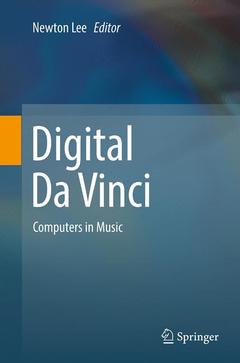Description
Digital Da Vinci, Softcover reprint of the original 1st ed. 2014
Computers in Music
Coordinator: Lee Newton
Language: English
Subject for Digital Da Vinci:
Support: Print on demand
267 p. · 15.5x23.5 cm · Hardback
Description
/li>Contents
/li>Biography
/li>Comment
/li>
Chapter 1: A Tale Of Four Moguls: Interviews With Quincy Jones, Karlheinz Brandenburg, Tom Silverman And Jay L. Cooper.- Chapter 2: Getting On The Billboard Charts: Music Production As Agile Software Development.- Chapter 3: Producing And Its Effect On Vocal Recordings.- Chapter 4: Mediated Interactions And Musical Expression – A Survey.- Chapter 5: Improvising With Digital Auto-Scaffolding: How Mimi Changes And Enhances The Creative Process.- Chapter 6: Delegating Creativity: Use Of Musical Algorithms In Machine Listening And Composition.- Chapter 7: Machine Listening Of Music.- Chapter 8: Making Things Growl, Purr And Sing.- Chapter 9: Eeg-Based Brain-Computer Interface For Emotional Involvement In Games Through Music.- Chapter 10: Computer And Music Pedagogy.
Stephen Barrass is a researcher and academic at the University of Canberra where he lectures in Digital Design and Media Arts in the Faculty of Arts and Design. He holds a B.E. in Electrical Engineering from the University of New South Wales (1986) and a Ph.D. titled Auditory Information Design from the Australian National University (1997). He was a Post-Doctoral Fellow at the Fraunhofer Institute for Media Kommunication in Bonn (1998) and Guest Researcher in Sound Design and Perception at IRCAM in Paris (2009).
Tim Barrass has a background in electronic arts practice spanning over 20 years. In his visual and sound work he has explored ways of generating and understanding patterns of interaction in complex systems. He spent many years as a circus musician, developing custom software for electroacoustic instrumental performance in unpredictable circumstances. In recent times his focus has been on developing Mozzi, the sound synthesis library for Arduino. He is currently researching the ergonomics of typing with a cockatiel on each forearm.
Juan Pablo Bello is Associate Professor of Music Technology at New York University, with courtesy appointments at the Department of Electrical and Computer Engineering, and NYU's Center for Data Science. In 1998 he received a BEng in Electronics from the Universidad Simón Bolívar in Caracas, Venezuela, and in 2003 he earned a doctorate in Electronic Engineering at Queen Mary, University of London. Juan's expertise is in digital signal processing, computer audition and music information retrieval, topics in which he actively teaches, researches and publishes. His work has been supported by public and private institutions in Venezuela, the UK, and the US, including a CAREER award from the National Science Foundation. He co-founded the Music and Audio Research Lab (MARL), where he leads research on music informatics.
Mattia G. Bergomi is amathematician,



